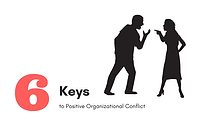Positive Leadership Fosters Employee Retention
Negative leadership perspectives become self-fulfilling prophecies.

In the property restoration industry, we all have heard multiple employers complain that they sent their employees off to a water damage certification class only to lose them in a short period of time to their competitors. These same people in positions of leadership believe the issue is 100 percent on the employee side. If we take a step back to dig beneath the surface, are we able to determine whether the symptoms give us more insight on the potential cause(s)?
Assess Your Training Approach
How does your organization approach training within your team? Is training a priority in the sense that those responsible come prepared to meetings with relevant information? Often designated training time approaches with no preparation and is utilized by leadership to air out opinions on how the team is coming up short on execution. When a team has experienced water, fire, and hazardous restoration employees, there are plenty of resources to facilitate sharing of knowledge from within.
If your training meetings are a bit off track, here are some questions to ask yourself as the leader:
- Do I lead by example, showing that I value ongoing personal development?
- Do my actions reflect that I value training and developing my team?
- How do I prepare and invest in regular training for my team?
- Am I leveraging the internal knowledge and local resources at my disposal to develop my team?
Avoid Certification Extremes
How does your organization approach certification with your team? Is certification something that is earned and celebrated? Most organizations are one of two extremes - A) certify everyone from day one or B) certify as few people as possible.
Certification extreme A often puts the cart before the horse and produces employees who have the book smarts without any field experience, which creates some tension with their trainers. Being able to quote the IICRC S500 is only one of many steps to being able to successfully perform mitigation.
Certification extreme B creates an environment without opportunity to expand knowledge or promotion within the team. While those in leadership would say they value industry certification, they either value it too much or do not practice what they preach. The end result is that only a few designated representatives become the information silos in the workplace.
Along with these extremes, there are three common and unhealthy responses to certification:
- Structural guilt. Employees are sent out for certification but leadership approaches the honor and achievement with guilt, making employees feel guilty that they are taking time from the team. A leader might say, “I’m only sending you because corporate is forcing me to send someone.” Rather that building up the opportunity and casting vision to the value this individual will bring to the team for the long term, the guilt card is played with a heavy hand.
- Value deference. This is often played in combination with the guilt trip. Those in leadership will belittle the value of certification, “The instructors are just going to try to sell you products.” Interestingly enough, many organizations that provide their own internal versions of training are the hardest selling or bloated in their view of the instructors' value to the industry. Whether an employee has been in the industry since its inception or is new to property damage restoration, everyone has something to learn.
- Self-fulfilling prophecies. The trifecta to this negative approach to training and certification is rounded out with those in a position of leadership placing bets on the duration of time it will take for the employee to leave. How many times have you heard that employees should have to sign an agreement that they will stay for X number of months or they owe the company the costs of certification? Rather than forcing an employee to sign a bogus and demeaning agreement, why not set up a review following completion of the course and increase their incentives? Retain your employees rather than drive them away.
Compete for Your Team
Whether you certify everyone or only a select few, what do you do with certification on your team? If your competitors are lining up to pay your employees who have become more valuable by completing benchmarks such as IICRC S500 or EPA RRP, why are you not competing for your own internally-developed resources? Here are some ideas:
- Lead by example. As a person in a position of leadership, are you still actively learning new things about your industry? While the leader should not be the only one acquiring certification, they should lead by example that on going education and personal development are important. When was the last time you learned and/or shared something?
- Invest in your greatest assets. Do you invest in regular training to develop your teams abilities and opportunities? Employee retention in the current economy is more difficult and costly than customer acquisition. Certification alone is not the cure-all to employee development, but it should be viewed as a valuable tool for the team as well as the team members.
- Celebrate achievement. Who doesn’t like to celebrate? What does your team celebrate? Do you celebrate certification both leading up to and following completion of the course? Do you make an effort to notice and share the day-to-day wins of your team?
Stomp Out Negativity
Perhaps many organizations are speaking their future into reality when they view their team members in a negative light. If you are fearful or suspicious of your people leaving the organization rather than blame them for being unreliable, make an effort to create an organization that they wouldn’t want to leave. Easier said than done, but clearly focusing on blaming others and complaining to your friends with similar negative views isn’t fixing the problem.
Looking for a reprint of this article?
From high-res PDFs to custom plaques, order your copy today!






